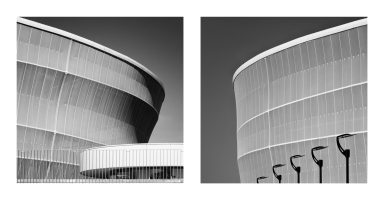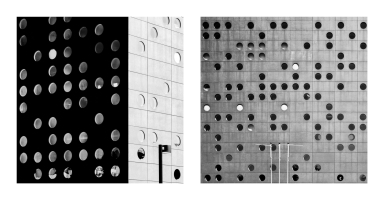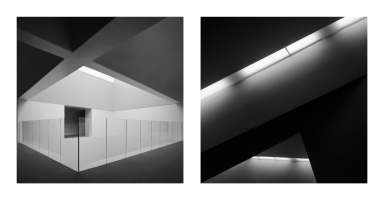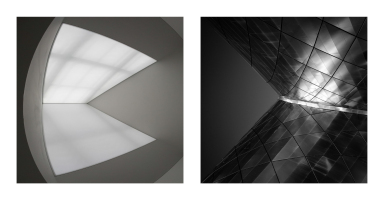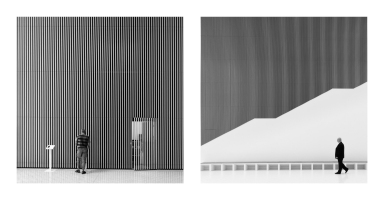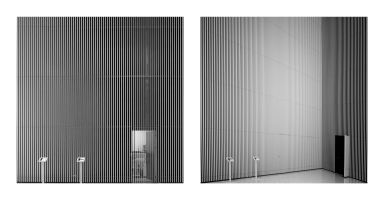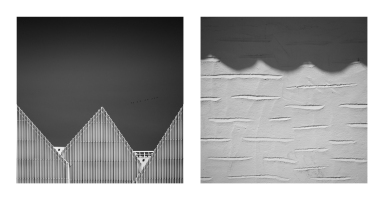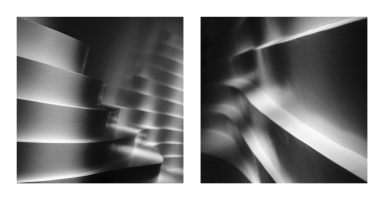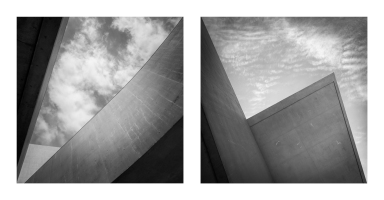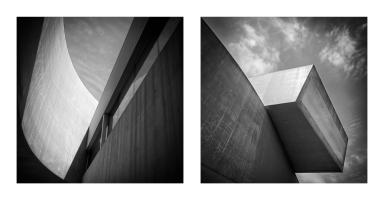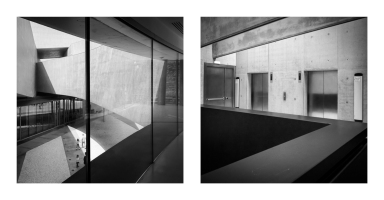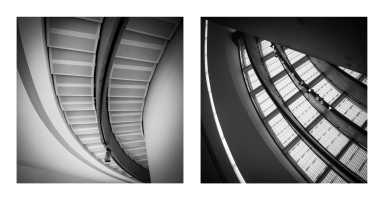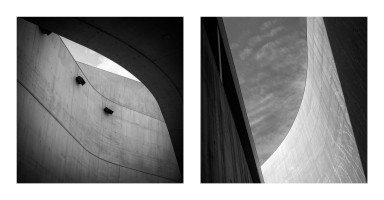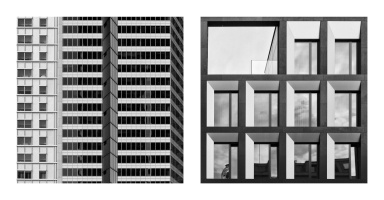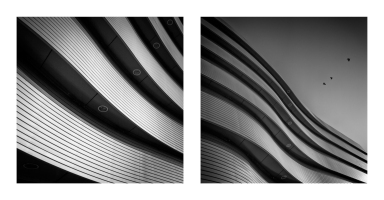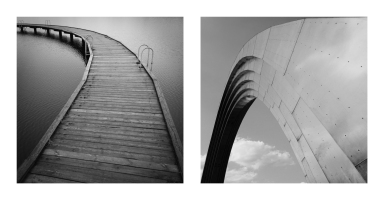SPACE DEFINITION
SPACE – according to Democritus, it is emptiness; according to Telesius, it is a system of relationships between things. Kant claimed it is an idea that cannot be removed from our thoughts.
Architecture not only defines space for practical purposes but also shapes the urban landscape in a way that is aesthetically pleasing, ensuring that its individual elements harmonize with each other. In my photography, the geometric motif often appears, regardless of what I am photographing. Consciously and subconsciously, I seek harmony in the lines, structures, and light and shadow of the surrounding space. The result of this geometric fascination is the series “Definition of Space.” Photographs arranged in diptychs define new spaces that do not exist in reality, becoming an image of my own imaginative space.
Tomasz Grzyb
In order to properly understand the concept of space, the author refers to the insights of eminent scholars in the exhibition information. So, according to Democritus, space is emptiness; according to Bernardino Telesio, it is a system of relationships between things, and in the interpretation of Immanuel Kant, it is an idea that cannot be removed from our thoughts.
At this point, one might ask whether Tomasz Grzyb was guided by these definitions when perceiving the space around him, or whether he considered their meaning and wisdom in his artistic work. Or perhaps he selectively applied them, mainly yielding to his own feelings and perception? The theories of Telesio and Kant (despite the time difference in their pronouncement) seem to be closest to the author, and they both suggest both a physical and emotional relationship of humans to the concept of space.
Tomasz Grzyb’s works focus on contemporary architecture framed and cut out from the overall context. In this way, new, unique, and self-contained artistic creations were born.
The space presented by him in a special way interested the author due to the fragmentary complexity of combinations of line harmony and structures; it automatically creates new forms, which are components of individual images, somewhat embedded in a reality different from ours.
All the author’s intentions have been deliberately incorporated into the form of a square, perceived as ideally neutral, even perfect, without imposing a variety of exposures. The presented content goes beyond the two-dimensionality of the proposed surface and reveals the author’s tendency to create interesting modeling through light and shadow, conveying specific emotional content to the viewer. Some lean towards the drama of presentations using strong textures and distinct light and shadow, while others, subdued and lightweight in their genre weight and devoid of distinct value differences, seem to leave them in strong contrast.
“Definition of Space,” masterfully presented by the photographer, is consciously devoid of color, even ascetic, and intentionally enclosed in diptych forms, which has a particularly strong impact on the viewer. It becomes (following Kant’s thought) an idea that cannot be forgotten.
Elżbieta Raczkowska
